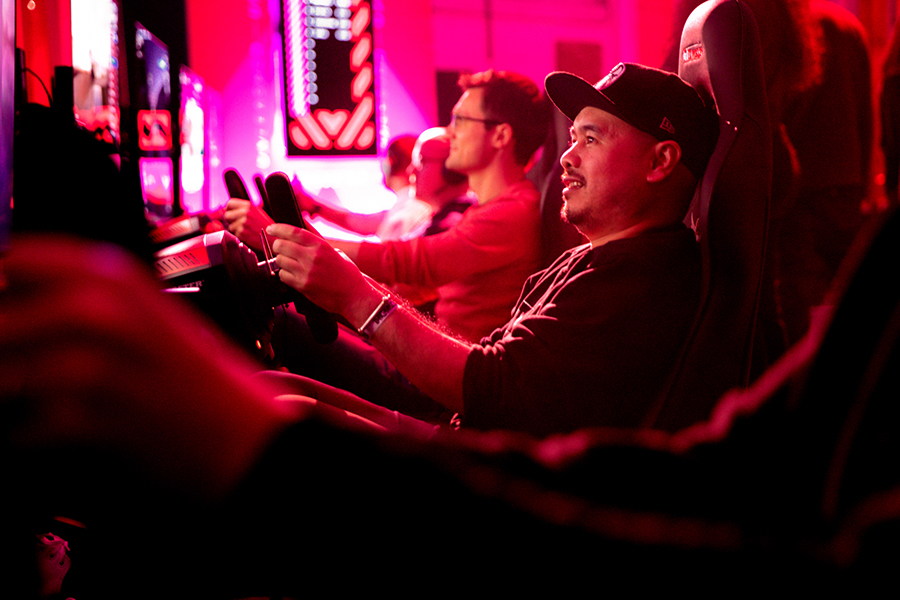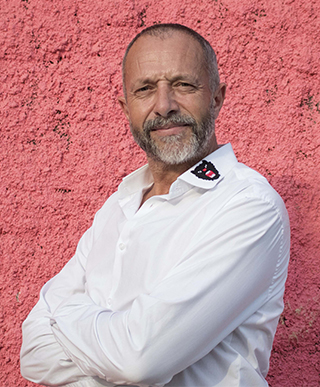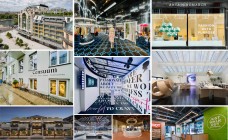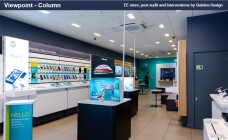How can brands capture the collective imagination in a world of continual disruption?
By Retail4Growth Bureau | October 20, 2022
Whatever channels a retail brand strategically identifies as the place to engage its target audience, the challenge then is to cut through, be seen, be heard, be valued and be remembered, says Antony Parham, Executive Creative Director at Imagination London, in this column.

An experiential pop-up by Imagination London for LG and gaming platform Forza Horizon to demonstrate the ‘dream gaming setup’ to a Gen Z audience, which generated a global reach of 18m with 95% of pop-up attendees rating LG OLED as the best display for gaming. Pic Courtesy: Imagination London
As the world moves from the euphoria of lockdown freedom into an era of global uncertainty dominated by economic, supply chain and workforce challenges, the one thing retail businesses and brands can expect going forward is that the new normal is always expect the unexpected.
So in this challenging era, across mass, premium and luxury sectors, how do retail brands capture people's imagination? Turning visitors into customers and customers into lifetime advocates? In turn, driving growth and success? Four key areas of focus can help retail businesses push on and become catalysts for innovation and transformative business progress.
 Experience ecosystem of ROI synergy
Experience ecosystem of ROI synergy
Many headlines have been given to ‘stores of the future’ with Zara’s biggest UK store just opened in the newly launched Battersea Power Station development in London as the latest example, featuring many technology-enabled touch points such as app bookable fitting rooms, self-scan checkouts, automated returns and automated two hour click & collect.
It is behind the scenes, however, where smart retail brands are setting themselves up for success with AI and data science enabled real-time analytical technology platforms that measure the halo effect of all brand channels from marketing, offline, events, retail, wholesale, e-commerce, product inventory and CRM, enabling holistic ROI, brand awareness and advocacy measurement. With this integrated data, brands can quickly establish how effective customer experiences are performing across all channels and react to any new challenges with strategic agility and speed to market compelling customer experiences that can be continually tested and updated to ensure maximum relevance to the audience.
Right place, right time, right experience
Backed with smart streamlined customer behaviour data systems, retailers can identify business opportunities and coordinate strategic channel plays where their current and future customers spend most of their time offering them what they really desire around stories the brand wants to tell.
From legacy brands to start-ups the why, what and how, question the right successful mix of channel experiences to engage customers depending on the brand story, sector, category, product, service and audience.
In the luxury sector, LVMH has reported a 28% growth due to customer demand and the group's recently renovated Parisian Art-Nouveau department store La Samaritaine is worth seeing for the breathtaking glazed atrium alone. Uniqlo’s global flagships are behind their 42% year-on-year growth proving large-scale physical brand homes can be a profitable beating heart of a retail brands ecosystem.
Tactical strategically located playful pop-up experiences integrated into marketing and social media campaigns are proving an agile and often cost effective way of creating brand awareness and kudos, particularly in the luxury sector with examples like Gucci Circolo and Balenciaga’s pink fluffy hypa real Le Cagole Collection appealing to a new younger luxury audience.
At Imagination, we were tasked by LG and the gaming platform Forza Horizon to demonstrate the ‘dream gaming setup’ to a Gen Z audience. Our solution was an experiential pop-up and integrated online campaign where lucky winners of a competition attended a two-day live gaming event and an IRL race track contest between leading gamers. The result was high-octane live content thatgenerated a global reach of 18m and 95% consideration of pop-up attendees rated LG OLED as the best display for gaming. A successful example of physical, human and digital combining together for maximum impact and reach.
Top of the hype cycle and still in development, the Metaverse and NFTs fill the headlines with brands working out whether to ‘dip their toe in’ or ‘jump right in’ to the potential huge audience, reach and opportunities, yet also remain cautious not to become unstuck with a valuable investment that could be used more effectively elsewhere. Recent retail Metaverse examples include Benetton who created digital and physical twin stores where visitors to the virtual store could win gamified QR codes to spend in the physical store in Milan.
What is becoming clear is that NFTs are fast becoming a leading gateway for brands to offer their audiences access to personalised membership and subscription based initiatives, offering exclusive content, products, experiences and communities in return for rich data and LTV customer advocacy.
Differentiated, programmatic, valued, remembered
Whatever channels a retail brand strategically identifies as the place to engage its target audience, the challenge then is to cut through, be seen, be heard, be valued and be remembered. There are some amazing memory making retail experiences around the world and global neighbourhoods are alive with small independent businesses offering innovative products, spatial curation and personal service. Yet across many global high streets, malls, online and social platforms there is also predictable, unsurprising homogeneity. Many retail businesses and brands seem scared to try something different, to be brave and stand out for the fear of failure. They are in danger of losing relevance and the ability to thrive.
In this era of global uncertainty, retail brands need to capture the imagination of consumer’s insatiable hunger for newness and escapism from life's challenges with differentiated joyful,
ever-changing programmatic based formats where culture, art, entertainment, meaningful technology, people, hospitality, product, collaboration and sustainability are curated and combined to turn stores into stories, spaces into club spaces, shops into workshops and static retail into content broadcast studios, diversifying revenue streams through rich mixtures of unorthodox hybrid experiences.
The human touch
Global lockdowns taught us that humans are sociable creatures who need real-life human interaction and social connectivity. You can only consume in the vacuum of a home, online or virtual reality for so long before the need for hospitality, sincerity and empathy.
Some ‘store of the future’ formats may offer self-help, technology-enabled shopping missions but without human service with a smile, you may as well be buying the product online. It is a brand’s in-store team that can bring the point of difference to the competition where they become storytellers, performers, social media influencers and relationship creators.
Empowering store teams with technology can create a powerful asset for every customer experience interaction from magic moments to time well spent. At Imagination, we have been delivering strategic experience design for Costa Coffee across multiple global markets and formats where expert human service and technology combine to deliver frictionless crafted quality coffee from speedy convenience to uplifting day-to-night dwell time.


_165_265.jpg)
_165_265.jpg)





Comments